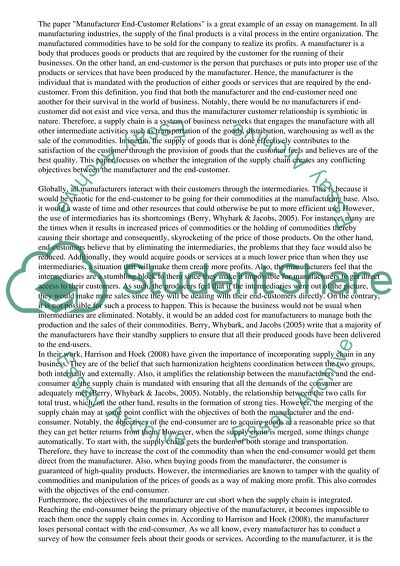Manufacturer End-Customer Relations Research Paper. https://studentshare.org/business/1881855-manufacturerend-customer-relations
Manufacturer End-Customer Relations Research Paper. https://studentshare.org/business/1881855-manufacturerend-customer-relations.


